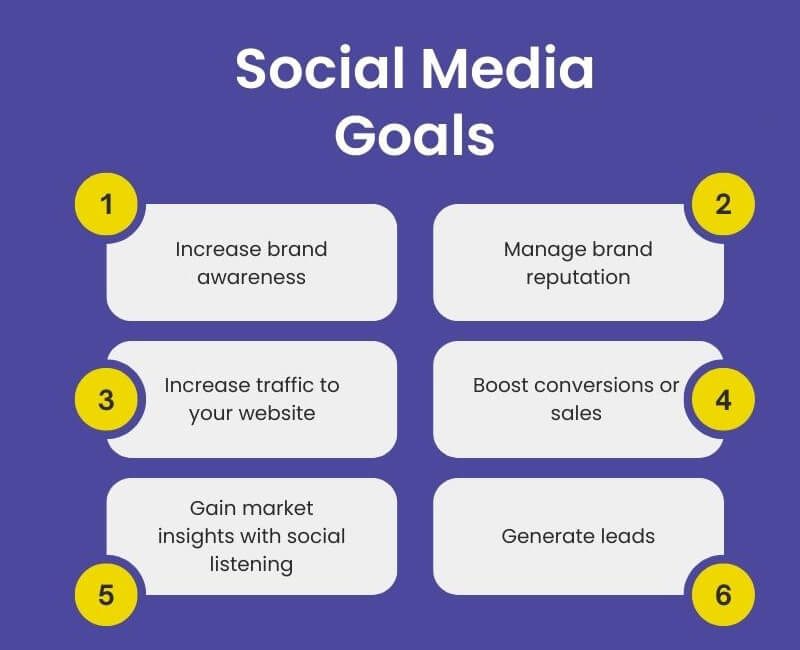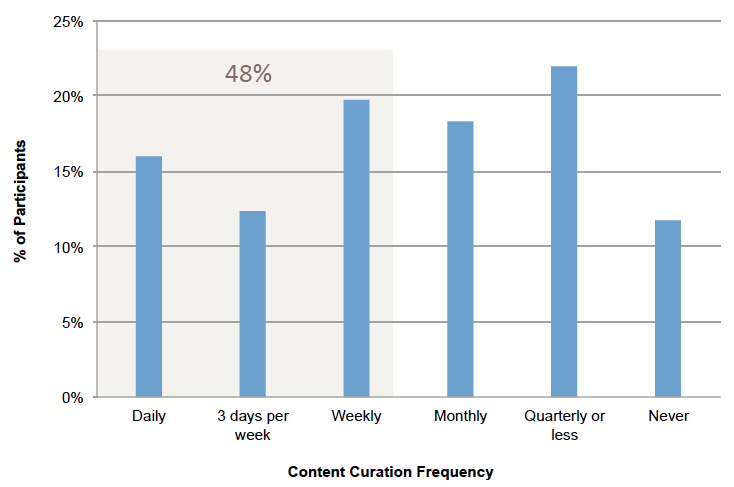7 Tips for a Rocking Social Media Strategy

An estimated 88% of brands today are using social media for marketing. If you’re not on Facebook, Instagram, X (formerly Twitter), or other major platforms, you risk getting left behind. However, the truth is, it’s getting much harder to stand out. How can your organization differentiate, and build relationships on noisy platforms?
Whether you’re just starting out or trying to hack your low engagement or small fan base, we’ve compiled a highly tactical guide to building (or improving!) your social media strategy:
1. Define Your Goals
As expert Jay Baer humorously puts it, “what’s the point?” What are you trying to do with social media, anyway? There is few right or wrong answers to this question, but the following chart lists some of the most common:

The study illustrated above indicates that today’s marketers are most likely to use social media for brand recognition, customer loyalty, driving sales, and improving their SEO. Once you’ve defined these objectives, it’s crucial to get tactical, and commit to ways you’ll make these goals a reality. If you hope to use social media to boost your SEO, these steps might look like the following:
- Provide social media managers with training on social media optimization.
- Ensure social media posts include the most important keywords.
- Create incentives for my audience to share, like, and comment on my content.
While defining larger goals is certainly a start, it’s not enough. You’ve got to create implementable ways you’ll reach these objectives.
2. Research Your Audience
Most marketers are familiar with the idea of customer and prospect research, and many others have read up on buyer personas. However, do you understand the context of the platforms you’ll be using? Different types of consumers approach social media platforms in different ways. While your B2B buyers might view Facebook as a friends-and-family only platform, they might perform product research using LinkedIn company pages. Knowing how your buyers use social media is what Gary Vaynerchuk calls “respecting the rooms we tell stories in.”
To learn more about buyer personas, check out Building an Epic Buyer Persona: a Totally Comprehensive Guide.
3. Research Your Competitors
Competitive analysis isn’t a one-and-done deal. It’s important to not only work through this when you’re building a social media strategy, but also on an ongoing basis. There are a number of tools that can make this easier for you, like SproutSocial’s paid reports, or emplifi.io, which offers a paid trial. Your analysis should look at the following factors:
- Followers
- Engagement
- Platforms Used
- Keyword Strategy
- Response Times
- Percentage of Curated vs. Original Content
- Visual content, and types
4. Map Your Topics
What is your brand’s unique value proposition? Why do your customers choose you instead of your competitors? Knowing the answer to this question is a crucial starting point to defining the topics that will fuel your social media. Choose one or two topics that fit your brand’s primary purpose, and 3 or 4 concepts that fit closely. For Writtent, this would probably look like the following:
Primary:
- Content marketing
- Small business content marketing
Secondary:
- Content promotion
- SEO and Keyword Research
- Effective copywriting tactics
- Smart social media
5. Prepare to Curate

The majority of content marketers share curated content on a daily basis. It’s crucial to achieve the right balance of curated and create content on your social media channels. To make things easier for your social media team, define a list of approved, high-quality resources for content sharing. Optimally, these should be bloggers and brands with an audience that closely mirrors your own. Go beyond sharing to relationship building, so you can enjoy the benefits of having your gesture reciprocated.
6. Create an Editorial Calendar
Your editorial calendar should be much more than a list of dates, blog title ideas, and keywords. It should be a document that manages the flow of information between your content and social teams, increasing transparency and collaboration. Create a document that’s clear enough that your social team can incorporate keywords, themes, and campaigns.
For tips on picking the best tool for this task, I recommend The 15 Most Life-Changing Editorial Calendar Tools.
7. Measure and Improve
While you shouldn’t skip any step on this list, this one is undoubtedly the most important. Your social media strategy is a living document, so you’ve got to revisit it on a regular basis, and determine ways to improve. Reviewing your metrics with a tool like Sprout Social can reveal hard truths about what is and isn’t working. Want to do even better? An agile approach is at the core of what we do at Writtent, which is why we’re constantly reevaluating, typically on a weekly basis.
Love the insights here? For more ideas on how you can successfully promote your content marketing, check out Content Promotion Strategy: 23 Proven Ways to Explode Website Traffic.

Comments (0)